EWOSA News - July 2021

- Home
- EWOSA News - July 2021
Welcome to the latest edition of the Energy and Water Ombudsman SA (EWOSA) quarterly newsletter: your one stop shop for emerging consumer trends, hot issues and policy matters.
From the Ombudsman
For us at Energy and Water Ombudsman SA, case levels remain relatively low: in fact, the most recent quarter was the lowest of the four in the 2020-21 financial year. Electricity issues showed a steady decline over the year while gas issues fluctuated between quarters and water issues remained relatively constant.
It is pleasing to see the early resolution of issues by our Members and the positive impact of government and regulator support.
As the “top five issues” graphic in this newsletter shows, in the most recent quarter we received fewer cases for Credit Management than for Billing, Provision and General Enquiry, which is unusual as we normally receive a significantly higher volume of Credit Management cases.
Many sectors have been preparing for an increase in customers needing financial support during the pandemic, but the experience in our Scheme is of lower levels of complaints overall. This is welcome if it means many customers are getting the support they need.
The Australian Energy Regulator (AER) publishes a weekly COVID-19 data series. The most recent data show that average electricity hardship debt has risen significantly since March 2020, while the number of customers in hardship has reduced.
It is too early to say whether this is a sleeping issue for customers in financial difficulty and whether the lifting of the AER’s Statement of Expectations will result in increased numbers of customers presenting with financial hardship issues.
As always, we are here to help. Please contact us on 1800 665 565 or via our website if you need assistance.
Sandy Canale
Energy and Water Ombudsman SA
Consumer Trends 1
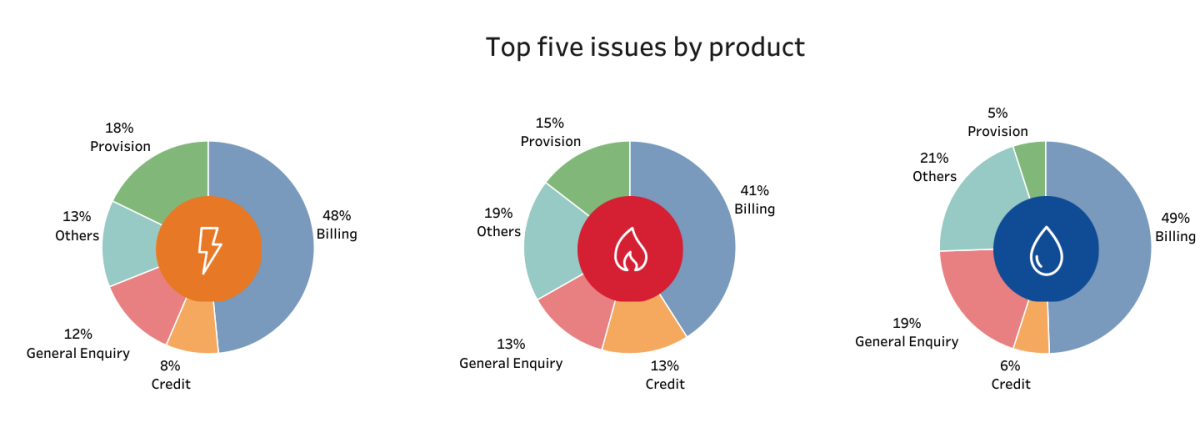

Hot Topics
The expectations of energy retailers to support customers in payment difficulty have been revised
While the AER’s temporary COVID-19 Statement of Expectations has been lifted, the AER has developed a “standby Statement” for energy retailers in the event jurisdictions are subject to extended stay-at-home orders. The standby Statement of Expectations is applied at the AER’s discretion to National Energy Customer Framework (NECF) jurisdictions - the Australian Capital Territory, New South Wales, Queensland, South Australia or Tasmania. It came into effect for the Greater Sydney region on July 1, 2021 and South Australia on July 20, 2021, in line with the stay-at-home orders.
The AER is continuing to monitor the changing situation to ensure energy customers in financial difficulty access supports like payment plans and access to hardship programs. The AER’s compliance and enforcement priorities for 2021-22 include a focus on effective identification of residential consumers in financial difficulty and offer of payment plans that have regard to the consumer’s capacity to pay.
Household and small business customers should still continue to get in touch with their retailer immediately if they find themselves in financial stress, so that they can receive the support needed to protect them from disconnection.
Source
Enabling more solar on the network
SA Power Networks currently imposes a fixed 5kW export limit on solar PV systems. As solar PV uptake continues to grow, excess exports can lead to network congestion which, in turn, can lead to problems such as solar systems tripping, or neighbouring customers being affected by over-voltage.
As part of the solution, SA Power Networks is planning to trial a system of flexible exports, with 300 residential solar customers in overloaded areas of the network where a lower fixed limit of 1.5kW is going to be required. New solar customers will be offered the option of a flexible export limit up to 10kW, with exports aligned to network capacity at all times rather than a low fixed limit. Existing solar customers will remain on a 5kW fixed limit.
Source
Hot water embedded networks in the spotlight
The Energy and Water Ombudsman NSW (EWON) reports that many NSW customers who live in apartments serviced by hot water embedded networks have no consumer protections and no access to rebates or concessions. Their buildings have a common hot water system and the meters are owned, maintained and read by a third party and non-network providers. Because these customers do not receive a retail gas bill, the sale of hot water is not covered by energy specific protections.
EWON is working with government and policy makers to find a solution. It proposes consideration of amending the National Energy Retail Laws to include hot water within the definition of energy, which could enable the AER to apply the exemption framework to hot water embedded networks.
Source
Consumer Trends 2
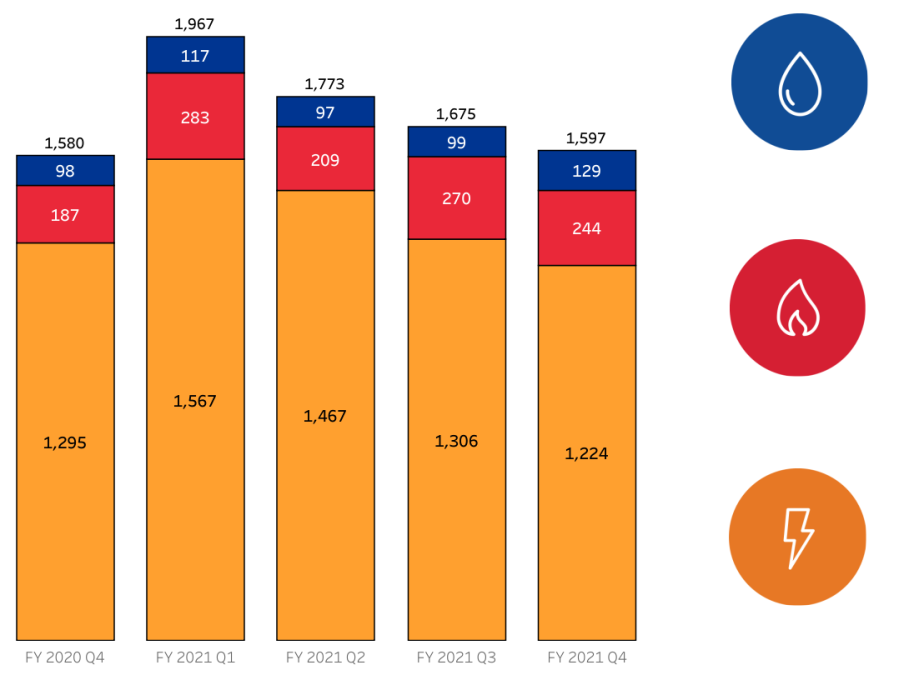

Case Studies
Issues: Land – Network Infrastructure – Visual/Noise Pollution
Utility: Electricity
Customer type: Residential
Case type: Investigation
The issue
Ms H complained about the noise from an electricity pylon next to her property and that the supplier damaged some of her plants and trimmed her tree when attempting to rectify the excessive noise.
Our review
The supplier acknowledged that the insulators were washed, to assist with noise reduction, one day after the washing was scheduled and that some plants and tree branches were damaged or trimmed when the insulators were washed.
The supplier apologised to Ms H that the location from which the insulators would be cleaned, given the access restrictions and safety requirements for cleaning on a “live” line, was not made clear to her before the work, and for the trees being trimmed.
Resolution
The supplier offered to replace the damaged plants, which Ms H accepted, and the broken tree limbs were mulched for her.
Several site visits were made after the insulators were replaced and little or no noise was detected. The supplier undertook to complete ongoing monitoring of noise and vibrations by specifically designed instrumentation.
Issues: Billing – High – Unexplained usage
Utility: Electricity
Customer type: Small business
Case type: Investigation
The issue
Ms P complained about a bill of $4,100 for 46 days for an office tenancy that was vacant at the time. She disputed the bill with her supplier, but the charges were referred for debt collection before the dispute was unresolved.
Our review
We found that the supplier should have requested a meter test when Ms P first raised the billing dispute, but did not. We also found that the supplier had replaced and discarded the meter while the matter was in dispute without first testing it for accuracy.
We reviewed Ms P’s pattern of use and the disputed consumption and were unable to verify that Ms P had been billed correctly.
Resolution
The supplier recalled the collection activity and waived the $3,600 final account balance, which was the remaining disputed charge.
Consumer Trends 3
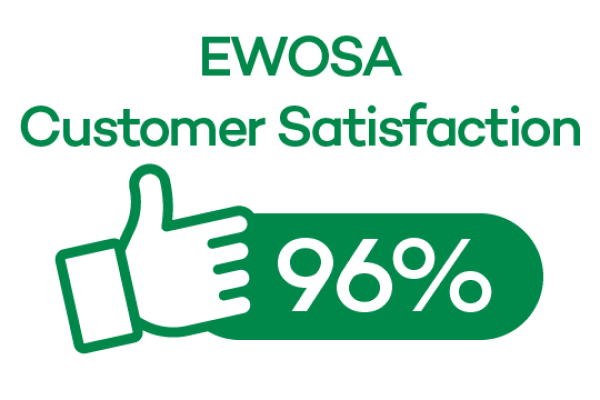
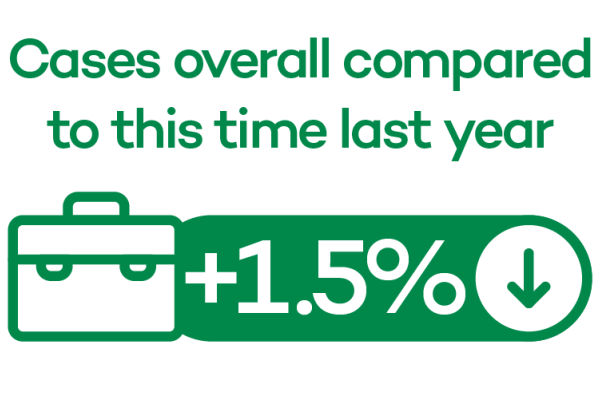
Customer Corner
The Electricity Reference Price makes it easier to get the best deal
The Electricity Retail Code standardises the way electricity companies present electricity prices, so consumers can “compare apples with apples” in their search for the best deal.
Electricity companies must show the reference price and an estimated annual cost. The reference price is a benchmark price for electricity set by the Australian Government and companies must use a percentage to show how their price compares to the reference price. Electricity companies also must give an estimated annual cost with all discounts included. Something may be required to get discounts: for example, paying on time.
More information
Australian Gas Networks is developing its program to support vulnerable customers
Australian Gas Networks (AGN) has been working with stakeholders and the AER to develop a Vulnerable Customer Assistance Program (VCAP) that will provide higher levels of service to vulnerable customers. It will:
• provide a dedicated resource to run the program
• develop a priority services register using an upgraded CRM
• provide funding for gas appliance safety checks and emergency appliances for vulnerable customers and to help vulnerable customers access more efficient appliances.
The VCAP initiatives aim to improve the customer experience as well as reduce the financial barriers that some vulnerable customers may face in terms of utilising gas more efficiently and safely. AGN will be further developing the VCAP during 2021.
Source
New AER report outlines current state of the energy market
The AER State of the Energy Market 2021 report, released on July 2, 2021, shows that electricity retail prices have slightly dropped over the past three years. This is in large part because of sharply declining electricity wholesale costs since 2019. The report also outlines the rapid transformation which is occurring in the energy market.
AER Chair, Ms Clare Savage, said: “Energy consumers are adopting their own ‘behind the meter’ energy solutions, embracing distributed energy resources that include rooftop solar PV installations, small batteries, electric vehicles and demand response. Almost 24% of all consumers in the NEM now partly meet their electricity needs through rooftop solar and sell excess electricity back into the grid, compared with less than 0.2% of consumers in 2007.”
Source
Public Submissions
Consumer Trends 4

The number of cases per 10,000 customers for each supplier is calculated by dividing the number of cases received during the quarter by the total number of customers for each supplier, multiplied by 10,000. Large Suppliers are those with over 100,000 customers, Medium-sized Suppliers have between 10,000 and 100,000 customers, Small Suppliers have between 1,000 and 10,000 customers and Very Small Suppliers have less than 1,000 customers. The total number of cases is also presented for context.

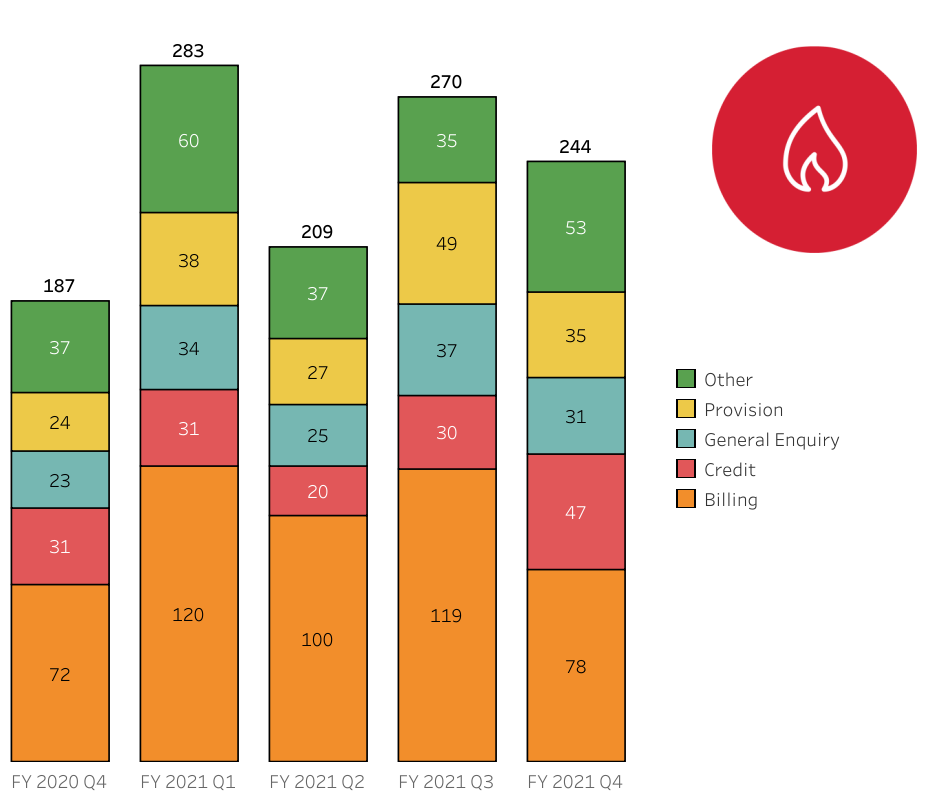

Remember, we are here to help
EWOSA facilitates the prompt resolution of complaints and disputes between consumers of electricity, gas and water services and Members of the Scheme by providing a service to consumers which is free, independent, accessible, fair and informal.
Freecall 1800 665 565
SMS 0488 854 555